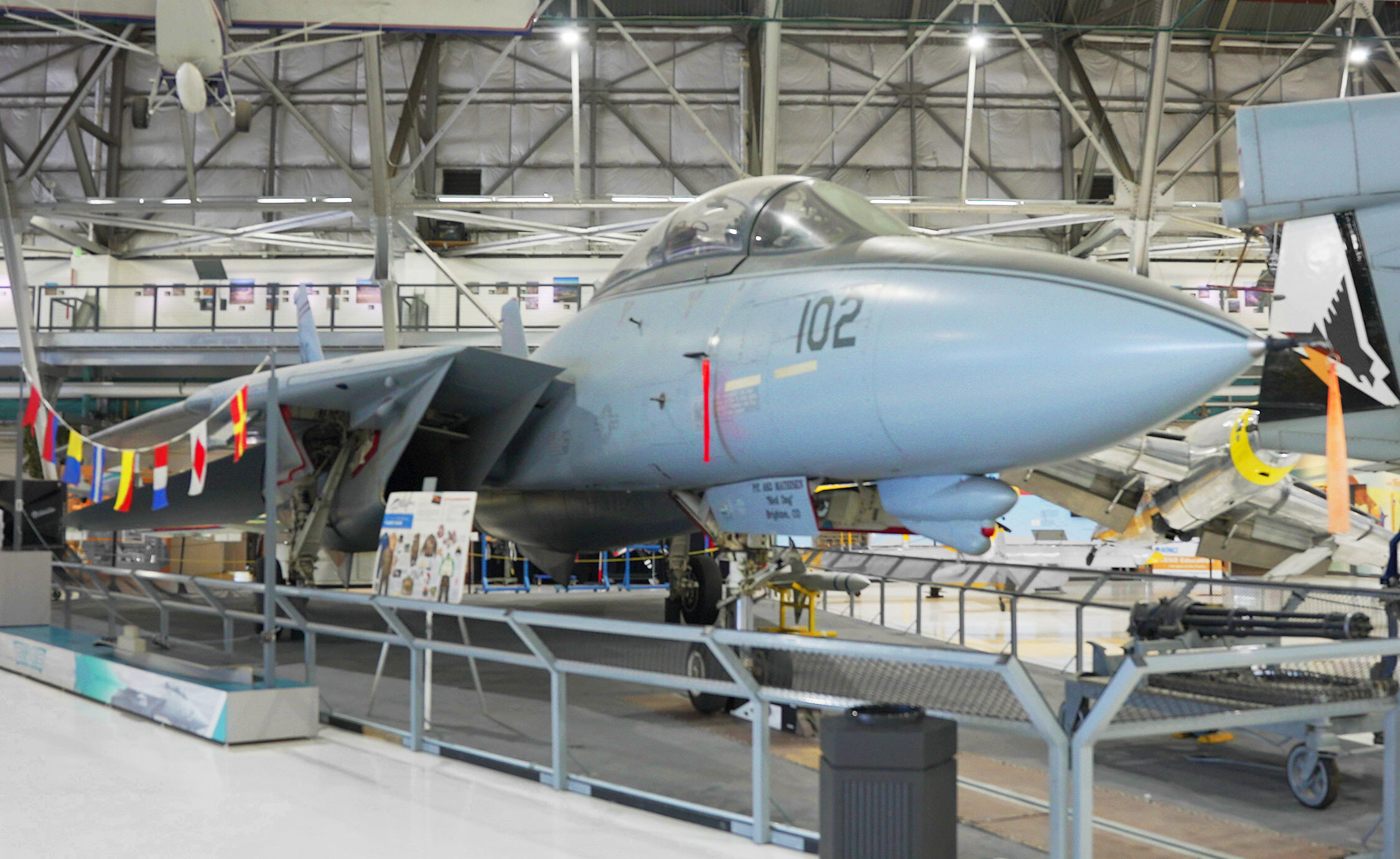So, first, let us talk about the “cheats”.
Turning the air source off, closed the bleed valves on the engines, And with the slightly higher pressure ratio that results, you should get a tiny increase in thrust. The guys who advocated this called it “zone six”. The problem, of course is that you also lose things like cabin pressurization and air conditioning, and weapon system cooling. So, while you might get a little bit more out of the motors, you’re hurting just about everything else on the airplane that you need, including crew.
Pulling breakers, LE1 and LE two locks out the aux flaps, and allows you to extend landing, flaps, while keeping the auxiliary flaps retracted.
Use of the landing flaps was a somewhat controversial topic in the F14 community.
The NATOPS extension speed limit on the landing flaps was 225 knots. Most squadrons had an SOP of 200 knots, to save wear and tear of flap/slat mechanisms, particularly the torque tubes that transmitted force from hydraulic motor to actuators. The torque tubes were a very high wear item, and were easily broken. In fact, it is reported, that the torque tubes were one of the first components that Iran had to reverse engineer.
So, why have a squadron SOP to save where and tear on flap parts, especially when you’re flying off the boat and normal flap extension and operation is critical for landing speed, only to tear them up by exceeding that speed limit while maneuvering the aircraft?
I’ve tried landing flaps - and in certain circumstances (flat scissor), they work. But in nearly every other maneuvering regime, you are asking to damage the airplane. For example, at the bottom of a rolling scissor, you’re gonna be about 300 kn. If you extended the landing flaps at the top of that scissor, you are more than doubling the design load on a component that was already known to be weak. I always knew when people came back from an ACM engagement with a flap slat lockout on landing, that they had been “cheating“. And not cheating particularly well, because they exceeded the speed limit of the airplane.
Breaking parts as a result.
Not a great plan.
So, no, I was not a fan of using landing flaps, even with LE1 and LE2 pulled. The only advantage to using full flaps with the aux flaps retracted, was that you get better airflow over the horizontal stabilizers, and perhaps a bit more pitch authority. But the disadvantage of LE1 and LE@ pulled, is that you can now sweep the wings with landing flaps extended, potentially crunching the main flaps into the side of the aircraft. Again, I just don’t think any of these “cheats” were a particularly smart idea.
There is no tactical advantage to the wing sweep switch in manual versus automatic. If the wing sweep switch is manual, and the wings are slightly aft of program, as soon as the air data computer starts to sweep the wings according to schedule, they go from manual to automatic and begin to program aft. You cannot move the wings farther forward than program, using the manual switch, you can only move them farther aft. So, what gain would you have?
Perhaps you referring to the use of the emergency wings, sweep handle, that allows you to position the wings wherever you want without regard to structural limits. Again, like the landing, flaps, exceeding the limits on the airplane is just not a great idea. In a high altitude fight, you could potentially push the wings forward, all the way to 20° where the program might have them say, 35°. So yes, you gained some performance, but you are exceeding a structural limit in the airplane. At some point exceeding structural limits is going to result in a damaged airplane.
Damaged airplanes don’t win fights.
Worse, I think that damaged airplanes are part of the reason that the F-14 was taken out of service. The maintenance man hour for every flight hour on the aircraft was considerably higher than that of the FA-18. Part of this was the normal process of airplanes getting older (the F/A-18C/D had really high maintenance man hours per flight hours in their later years of service) part of this was the overall complexity of the frame itself, but part of this was deliberately abusing the airplane.
For me, abusing the aircraft was the same thing as abusing the sailors who had to take care of it. If you “borrow the car“ and then tear it up and bring it back, they’re the poor souls who have to put it back together again. I fought the airplane to its limit, but I never exceeded the limit (OK, a little gentle exploration of speed and altitude may have happened, but not G, not flaps, and not air load limits) because I didn’t wanna break the thing and have our guys spend hundreds of hours putting it right.
More on the AIM-54 later. I’m not sure how much I can tell you that isn’t still classified.

